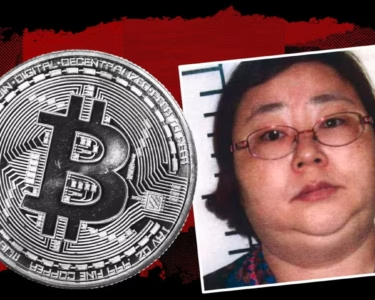Washington, D.C. – President Donald Trump announced on Thursday that the United States is poised to strike a trade deal with China, a statement that comes amid heightened trade tensions following a series of aggressive tariff hikes. The announcement, reported by Watcher.Guru on X, reignites speculation about a possible resolution to the long-standing U.S.-China trade war, which has disrupted global markets since 2018.
Trump’s comments follow his recent decision to impose a staggering 125% tariff on Chinese imports, effective immediately as of April 10, 2025, according to BBC News. This move escalated an already contentious trade relationship, with China retaliating by raising tariffs on U.S. goods to 84% from 34%, as reported by Fox Business. The trade war, which has seen over $550 billion in Chinese goods targeted by U.S. tariffs since 2018 (USTR data), continues to strain global supply chains and raise costs for consumers worldwide.
Speaking at a NASCAR event at the White House last week, Trump emphasized his commitment to securing “fair deals” with China and other nations. “A deal’s gonna be made with China, a deal’s gonna be made with every one of them,” he stated, according to BBC News. On Thursday, Trump doubled down on this optimism, claiming progress in trade talks, as noted by Yahoo Finance. However, the path to an agreement remains uncertain, with Chinese President Xi Jinping showing reluctance to engage directly.
Xi’s hesitation stems from domestic political pressures, according to China expert Gordon Chang. In an interview with Fox Business on April 10, Chang explained that Xi fears criticism from fellow Communist Party leaders if he appears to concede to U.S. demands. “He can’t do that, because if he does, his Communist Party fellow leaders, they’re going to criticize him,” Chang said.
This sentiment is echoed by The Atlantic, which reported on April 11 that Xi’s promotion of Chinese nationalism makes him unlikely to “kowtow” to Trump, preferring to project strength on the global stage.
The stakes are high for both leaders. Trump’s tariff strategy, which also includes a 145% tariff on Hong Kong exports after the U.S. revoked its special trade status in 2020, has drawn sharp criticism. Hong Kong’s government condemned the U.S. actions as “unreasonable,” warning of rising consumer costs, and plans to file a complaint with the World Trade Organization, following China’s lead, per Yahoo Finance.
Meanwhile, Trump has introduced a 90-day pause on tariffs above 10% for most countries—except China, Canada, and Mexico—indicating a targeted approach toward Beijing.
Public reaction to Trump’s latest statement has been mixed. On X, users expressed both optimism and skepticism. @CryptoStache described the situation as “hard ball bargaining,” while @SpencerHakimian cautioned that any deal might be “on China’s terms.” Others, like @JulbyJuli, celebrated the potential for progress, exclaiming, “FINALLY OH MY GOD!”
Historical context provides a backdrop for the current negotiations. The image accompanying Watcher.Guru’s post, showing Trump and Xi shaking hands in 2019, likely depicts their meeting at the G20 Summit in Osaka, Japan, on June 29, 2019. That summit led to the Phase One trade deal signed on January 15, 2020, which addressed issues like technology transfer and intellectual property but failed to resolve deeper tensions (USTR.gov). Since then, both nations have continued to spar over trade imbalances, technology, and geopolitical influence.
As the global economy watches closely, the future of U.S.-China trade relations remains uncertain. China has called for the U.S. to appoint a dedicated negotiator to facilitate talks, a step that could pave the way for a Trump-Xi summit, according to Yahoo Finance. Whether the two leaders can bridge their differences—and whether Xi can navigate his domestic political constraints—will determine if Trump’s optimism translates into a tangible deal.
For now, the world waits to see if this latest chapter in the U.S.-China trade saga will bring resolution or further escalation.






